Many years ago, a young man visited the Asheville, NC mountains and loved it so much that he started buying up large pieces of land in the area. He knew that he eventually wanted to build his home there. In 1888 he was finally ready to start building. He enlisted the help of two of the most prolific people in their fields to help him. Richard Morris Hunt helped him to design and build his home, and Frederick Law Olmstead helped him design the grounds and gardens. When this 175,000 square foot house was finished, it, and the 125,000 acres it sat on, became the famous Biltmore Estate, home of George Vanderbilt, his wife Edith, and their daughter Cornelia.
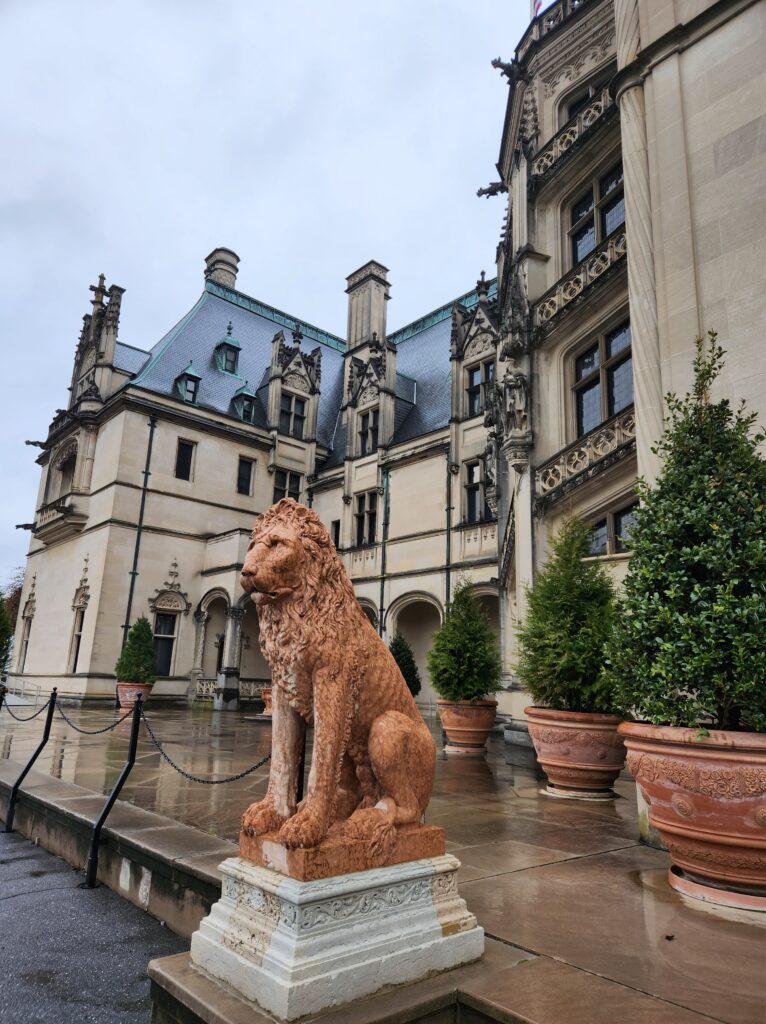
As you walk between the two lion statues that flank the front door of the Biltmore House and step inside, the first thing you see is the beautiful Winter Garden.
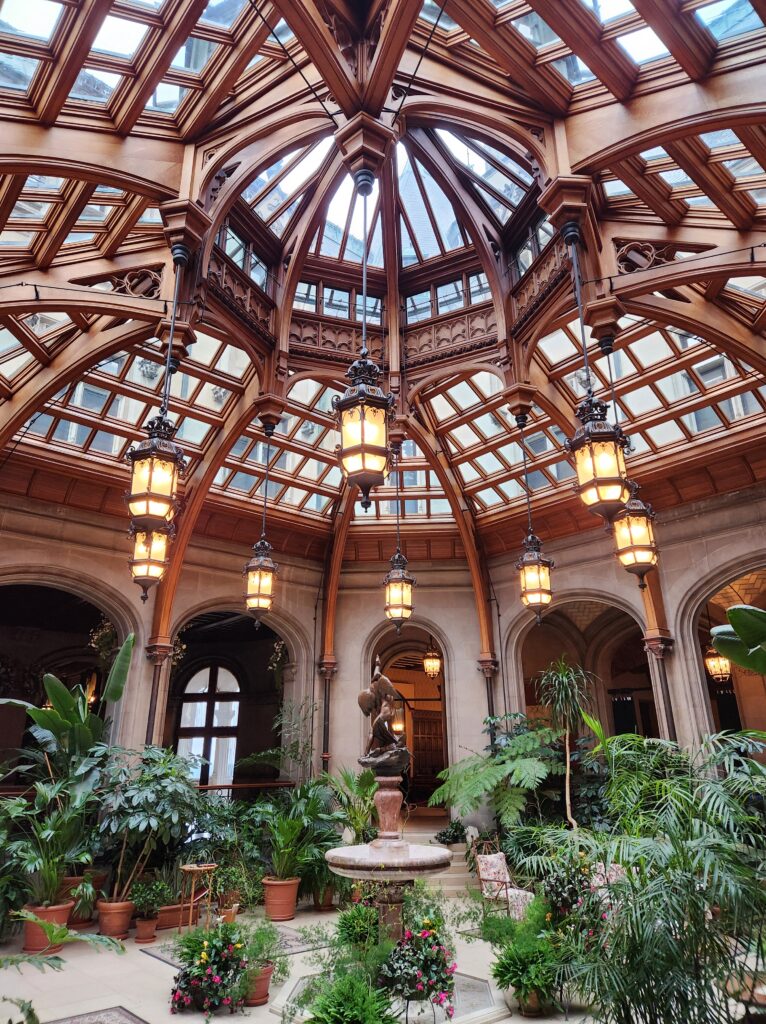
On my first trip to the estate, several years ago, I mistakenly thought that this room was the actual Conservatory. I’m happy that I was wrong…but more on that later.
The Winter Garden was one of my favorite places in the house. I can just imagine sitting in a comfy chair among the plants, feeling the sun through the glass ceiling above, and reading a book. In other words, the perfect place to spend time; in the winter especially. A video I recently saw on Biltmore’s Instagram said that when George Vanderbilt was alive, this room was often so filled to the brim with plants that you couldn’t see the inside.
Another interesting fact about this room, is that there is a hidden door in the floor. It was placed there to “allow plants to be brought back and forth from the Conservatory without disturbing guests.”
From there, you weave your way through the different rooms on the tour.

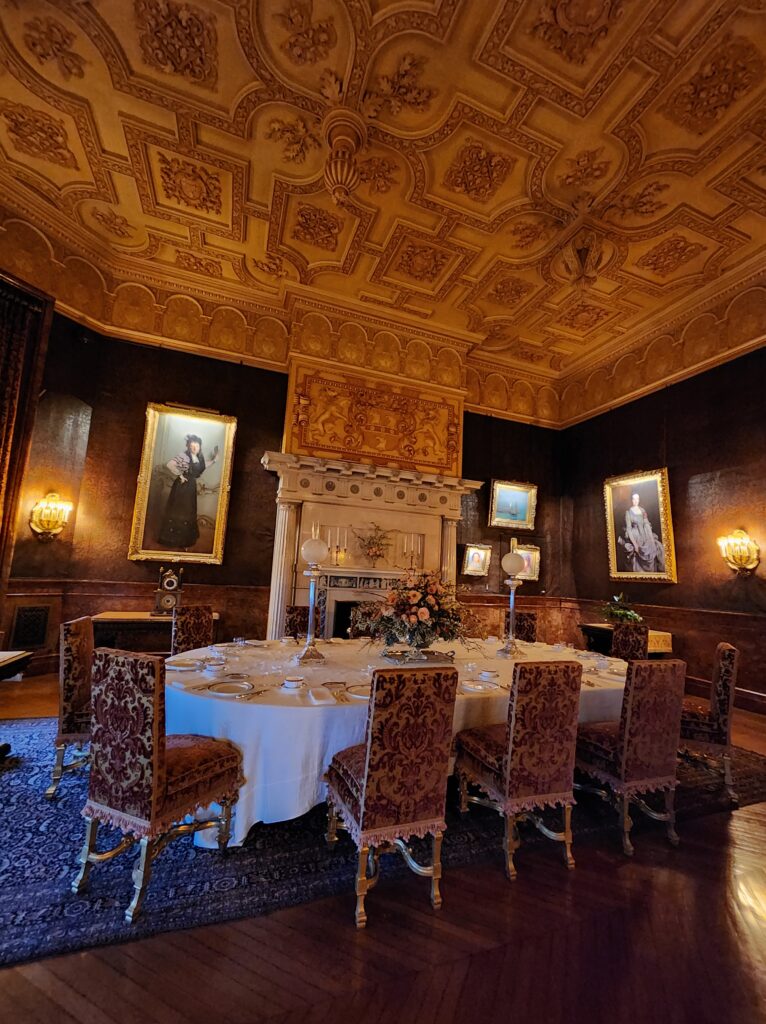

The Billiard Room, Banquet Hall, bedrooms, sitting rooms, smaller dining rooms, music room, and so on. It was fascinating to hear all of the little details about each of the rooms we visited. To see the care that went into not only the original design, but into the upkeep and restoration that goes on every single day.
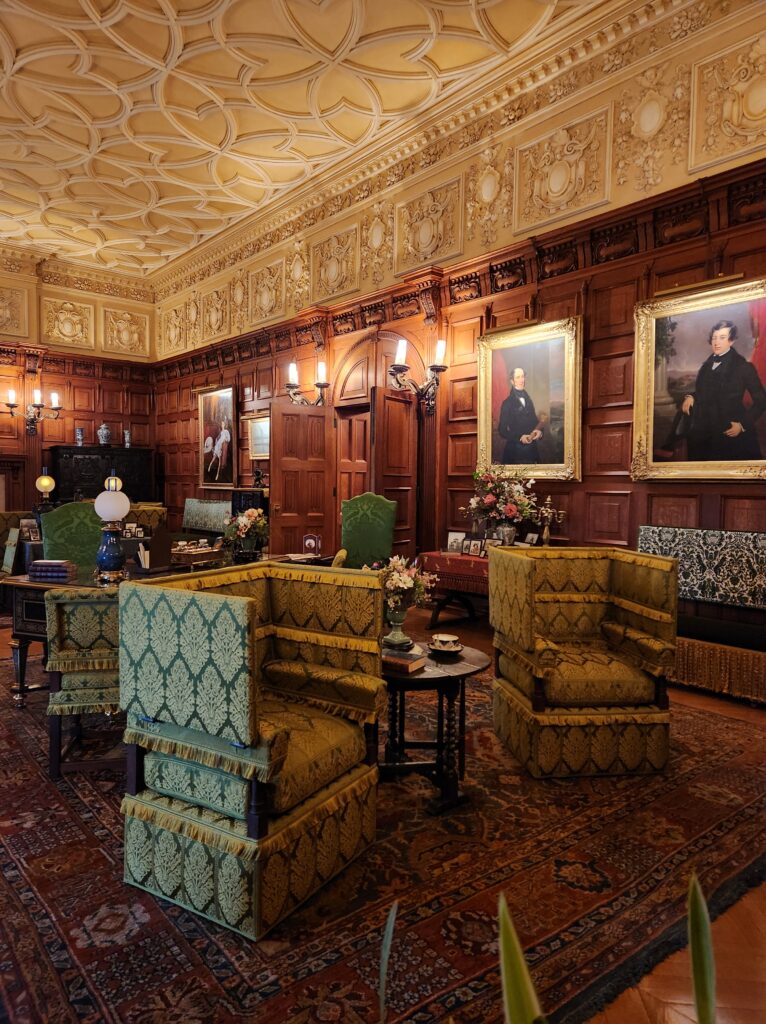
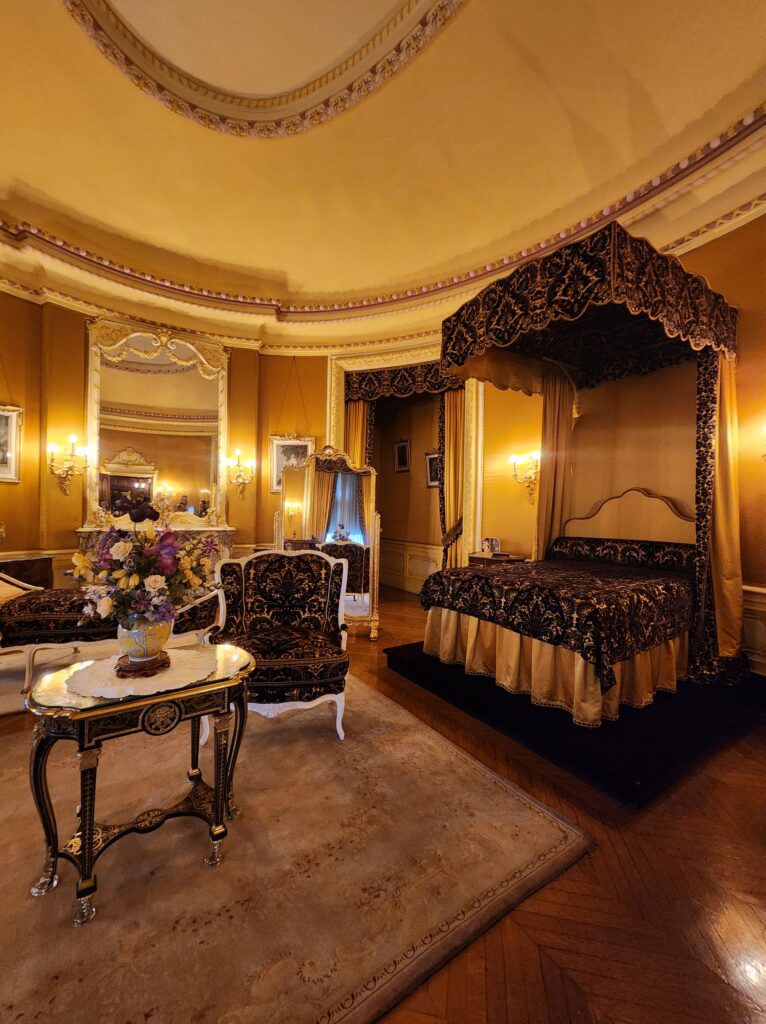
Even the ceilings are amazing!
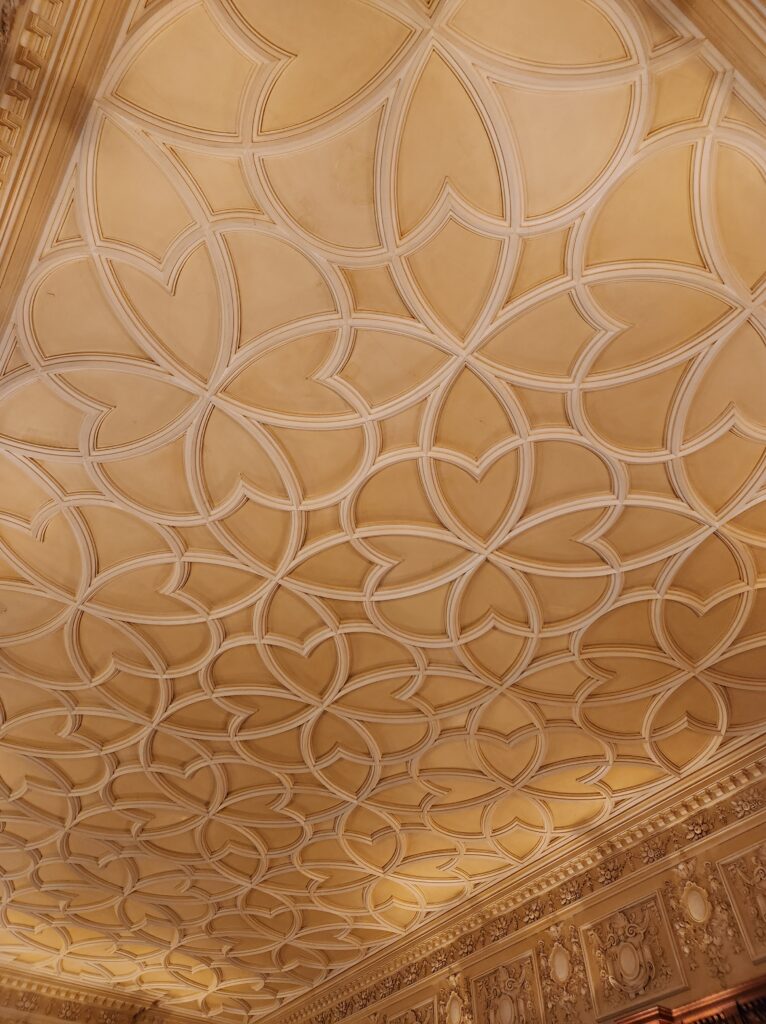


There were a few other rooms in the house that I could easily see myself spending time in as well. The library for example…ooooh….the library.
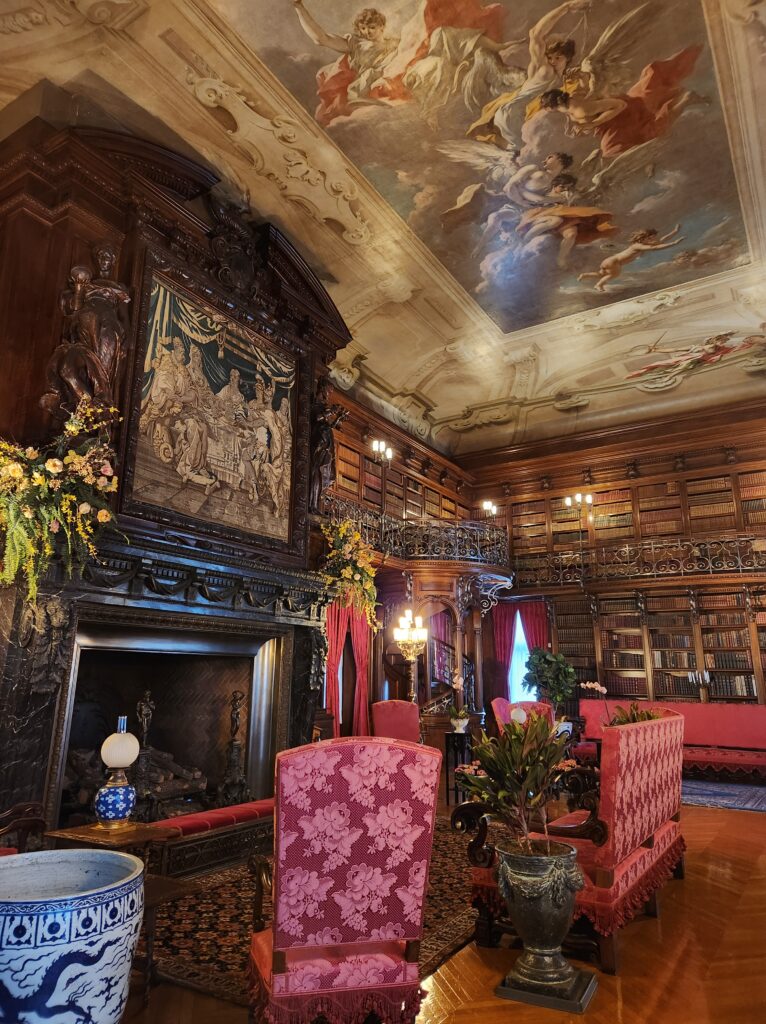
George Vanderbilt was an avid reader and collector. He and Edith had that in common. Of the over 23,000 books that they collected about half are in the Biltmore Library. George even kept journals that listed the books he read throughout his lifetime.

Knowing this makes this room that much more interesting to me. Because it’s not just a collection that was put on display for show. The people that lived here genuinely enjoyed what they were doing and collected things that mattered to them. Which makes the house feel less like you’re walking through a museum full of stuff, and more like you’re getting a glimpse into their actual story.
A room that I hadn’t seen on the tour before, but one that immediately became a favorite was the Halloween Room.

The Halloween Room isn’t named for the holiday, but rather for the images that are portrayed on the wall. Up until a few years ago, the staff at the Biltmore could only guess at why this room was painted the way it was. They originally thought that maybe it had been painted by guests during a Halloween party.
But it turns out that the paintings were done by John and Cornelia Cecil (daughter and son-in-law of the original owners George and Edith Vanderbilt) in preparation for a New Years Eve party that they had at the end of 1925.

The images are scenes from a popular Russian cabaret and vaudeville show that the couple had likely seen and enjoyed.

I love that this room would have been so immersive for their guests that evening. Like they were stepping into the show itself. It speaks to the same art loving part of me that the murals in places like Cleveland, OH do.

One of the things that makes the Biltmore Estate so special overall, is the fact that it showcases the Vanderbilt’s lifelong curiosity about the world around them, their love of travel, and their efforts to make everyone that came into contact with them feel special.
Their stories weave in and out of each room more so than any other home like this that I’ve been to. The idea of collecting items as they traveled along and curating their own special mixture is something that I aspire to in my own home. Not to the extent that they did of course, but the feeling. Having things in my home that remind me of places I’ve been, special people that I’ve come into contact with along the way, and experiences that have meant a lot to me.
The other thing that is fascinating, especially given the age of the estate, is the amount of documentation that the Biltmore still has on the family. Photos, newspaper articles, journals, letters, and so much more. The curators are constantly researching and learning new things about the history of the estate, like the discovery surrounding the Halloween Room. This is how they are able to keep things so close to the way they were when George and Edith lived here. This is how they are able to make the stories of the home and grounds come alive as well as they do.
Speaking of the grounds…remember I said that I originally thought the Winter Garden was the Conservatory? THIS is the actual Conservatory.

Richard Morris Hunt (who designed the house), Frederick Law Olmstead (who designed the grounds), and George Vanderbilt worked together to create this gorgeous spot on the property, where people could come any time of the year and be in the center of a magnificent garden. According to Blue Ridge Botanic, there are over 2000 plants housed in the Conservatory at any given time.
They had a few plants there that I also have at home, and needless to say, mine don’t look quite that good. So, added to the library, I have goals. =)
I timed my visit so that I could be there as the tulips were blooming.
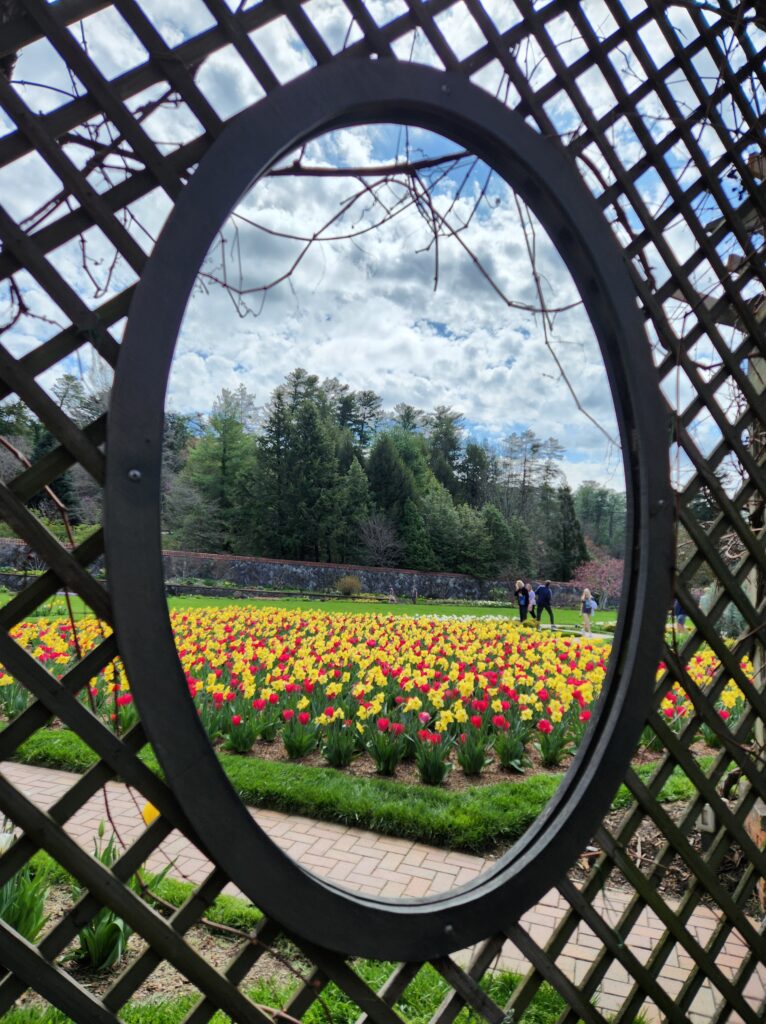
Because of this, some of the other flowers hadn’t quite bloomed out yet. The Azalea gardens for example, and the rose gardens. This is one of the reasons that I keep second guessing my decision to not purchase a season ticket while I was there. Even though I’m a little over an hour away, it would be a beautiful experience to wander through the gardens in each changing season.
With that being said, if you are coming to the Biltmore Estate, and you have the time and means, I would highly recommend getting at least the 2-day ticket. This will allow you to take your time exploring the house and grounds, and to enjoy any special events they may have going on as well.
(To see more of my pictures of the gardens and grounds, click here. I have way too many for just one post.)
Next to the tulips, the other reason that I decided to visit the Biltmore Estate when I did was because of the Chihuly Glass Exhibition.

I’m not going to write a lot here about the exhibit, because again, too many pictures for one post (haha!), but let me just say this: if you are ever close to one of Chihuly’s installments, take the time to go see it. It was amazing to see these pieces in person. To see how the installation was set up, and to imagine the amount of creativity, innovation, and talent that went into making them a reality.
(To read more about Chihuly, and see pictures from Chihuly at Biltmore, click here.)
Sadly, George Vanderbilt passed away when he was only 51 years old, but his love for art, travel, agricultural science, forestry, and his family and community lived on – not just through the house and the estate, but also in the forest surrounding it.

It was one of George’s dreams to help create a self-sustaining estate for himself and his family, but also to help maintain and preserve the surrounding forests for future generations. He worked with Gifford Pinchot (who would go on to become the first chief of the United States Forestry Service) and Dr. Carl A. Schenck (who opened the first school of forestry in the United States at the Biltmore), to make this dream a reality.
Through their efforts, the land surrounding the Biltmore house became “America’s first managed forest on such a large scale” and was the birthplace of American Forestry. Many of the practices that they developed then are still being used today to keep our forests healthy and happy.
After George’s death in 1914 Edith sold a little over 86,000 acres of this managed forest to the U.S. Government for less than $5 an acre. She did this to help maintain the estate, but also because it was George’s dream to have a large part of the land he owned be available for the public to use and enjoy for years to come. Two years after the sale, this land was designated as part of the newly established Pisgah National Forest. So, even though he didn’t get to see it, Edith helped to fulfill a life-long dream for George and helped create the first National Forest east of the Mississippi.
Cornelia, the Vanderbilt’s daughter, and her husband John A.V. Cecil opened the Biltmore House to the public in 1930.
They did so in an effort to generate income to help preserve the estate and to help boost tourism in Asheville during the Depression. In a quote from Cornelia, from the welcome speech that she gave the day the Biltmore House was opened she said, “I also want to say that we both feel in doing this, it is a fitting memorial to my father. After all, it was his life’s work and creation.”


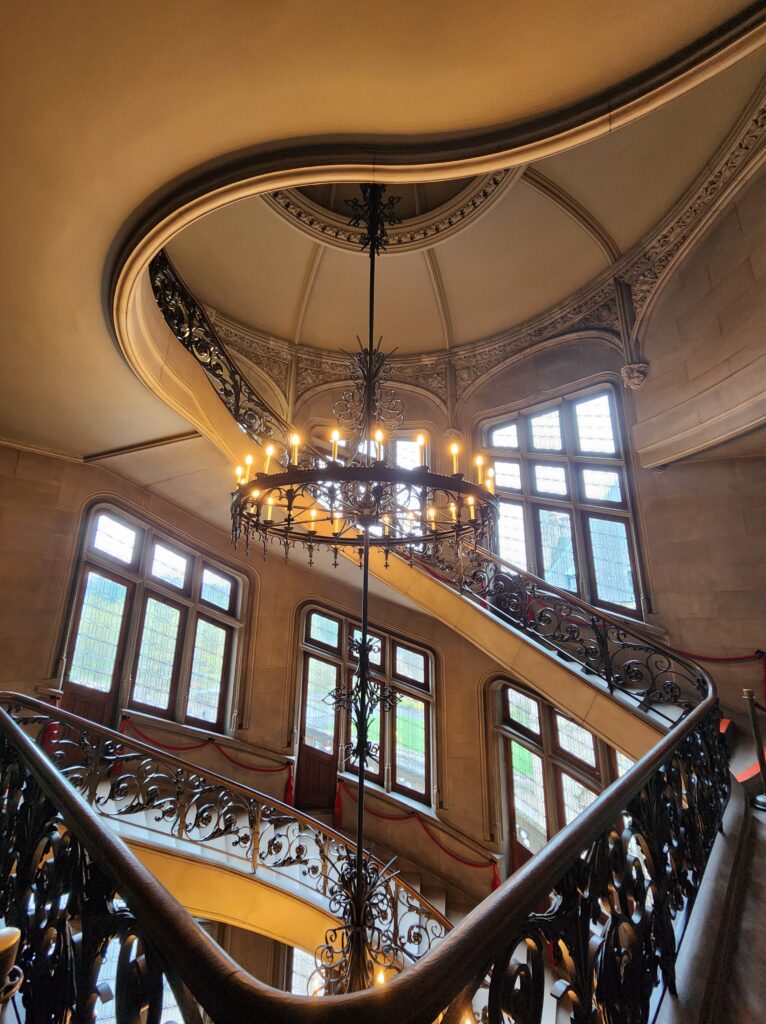
The Vanderbilt family still own the estate today. A few of them even live on the property. And while some things have changed and modernized (which, from what I’ve read about him, I think still would have delighted Mr. Vanderbilt), as it says on their website: “Just as first envisioned, Biltmore is all about home – welcoming and celebrating family and friends, and extending the spirit of Biltmore beyond our 8,000 acres.”
That spirit seems to shine through everything the Biltmore Estate does. They may not always get it right, they’re human after all, but they seem to be trying their best to honor the past while looking forward to the future.
